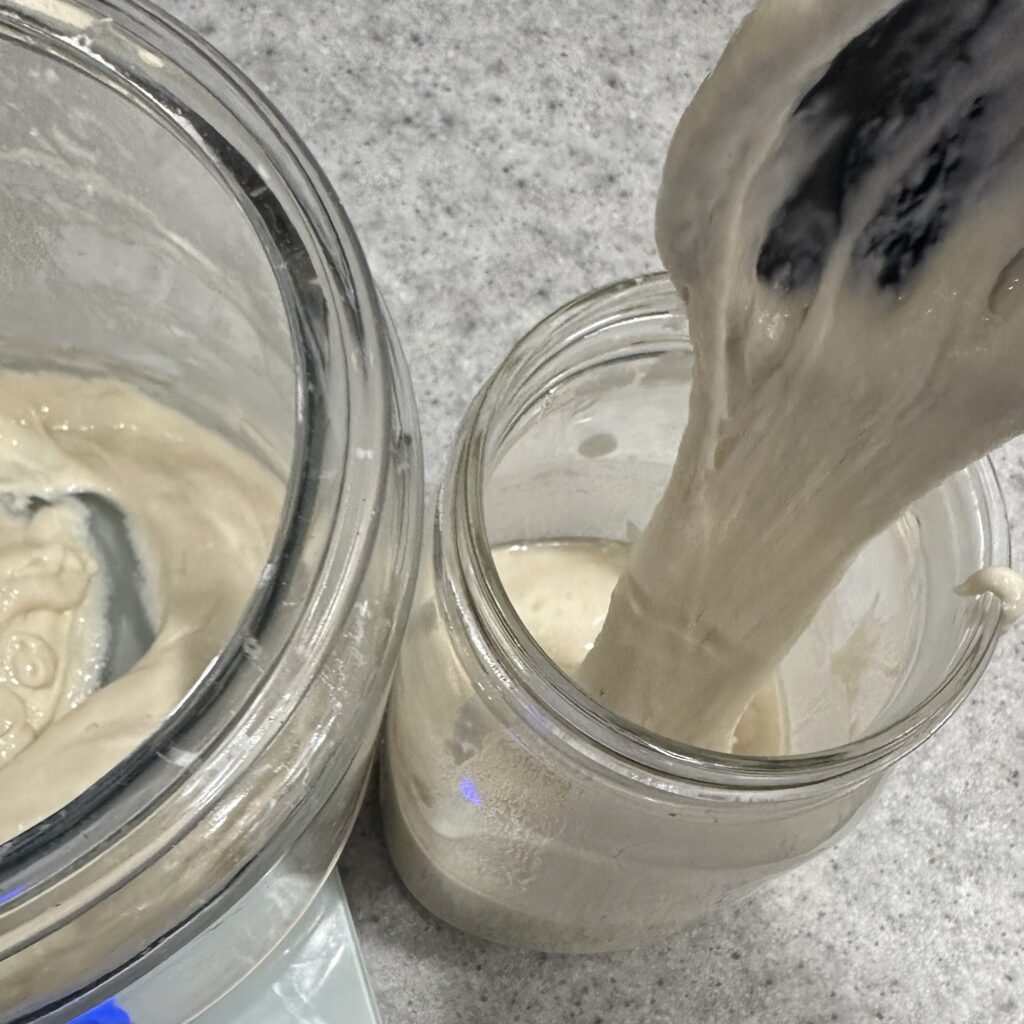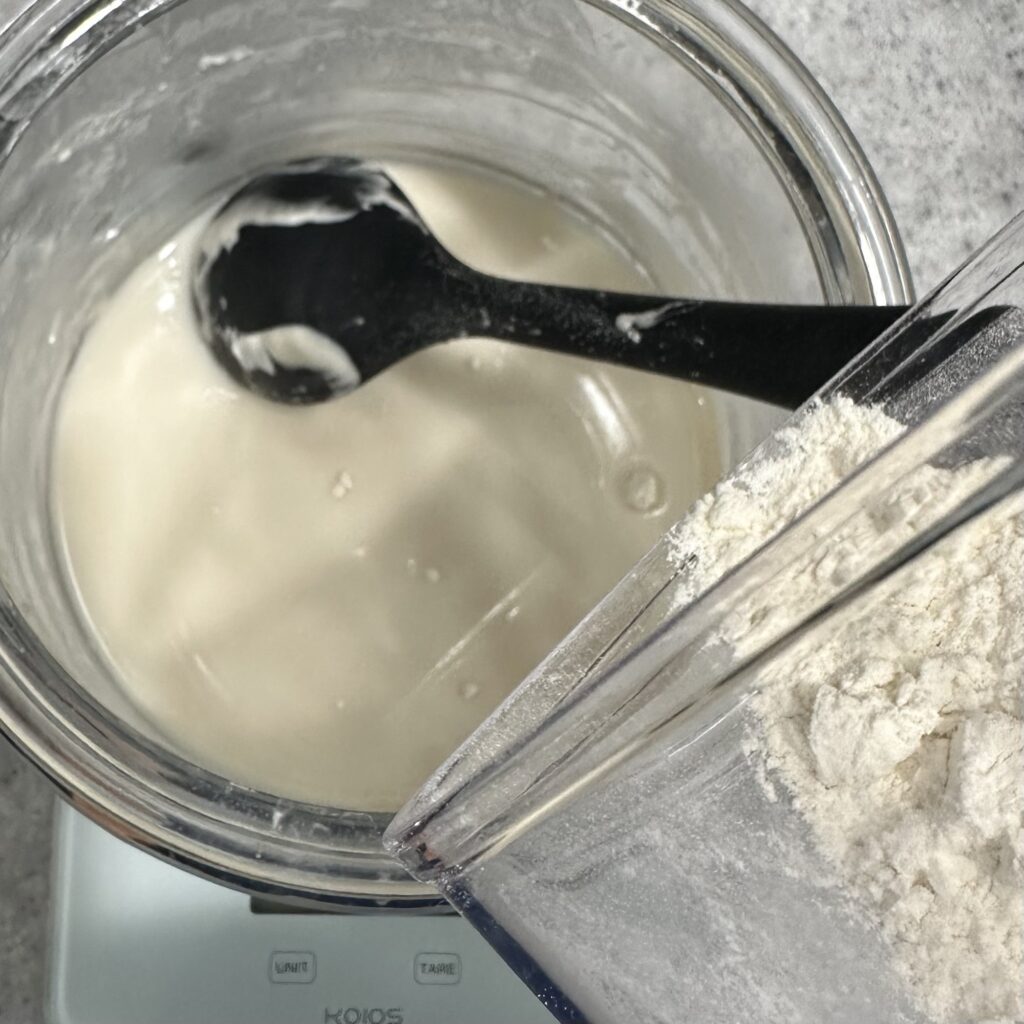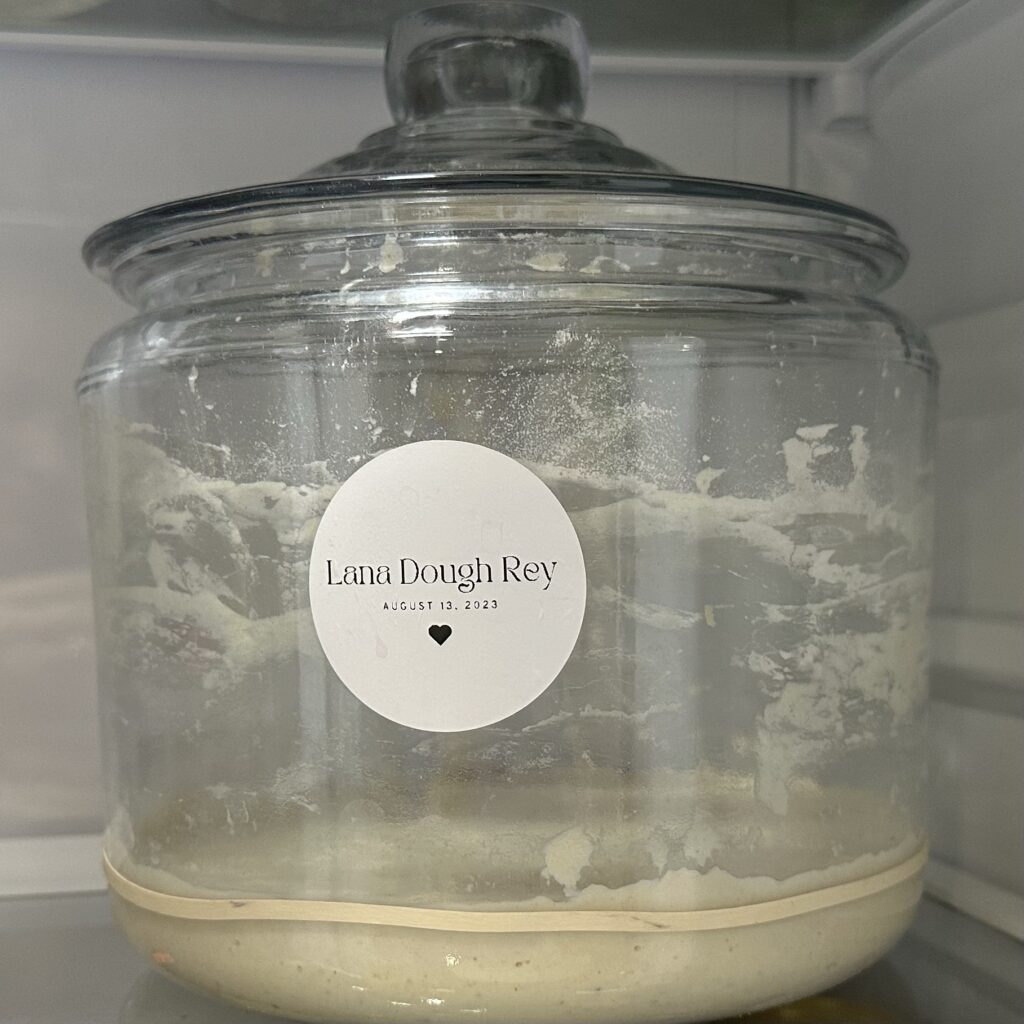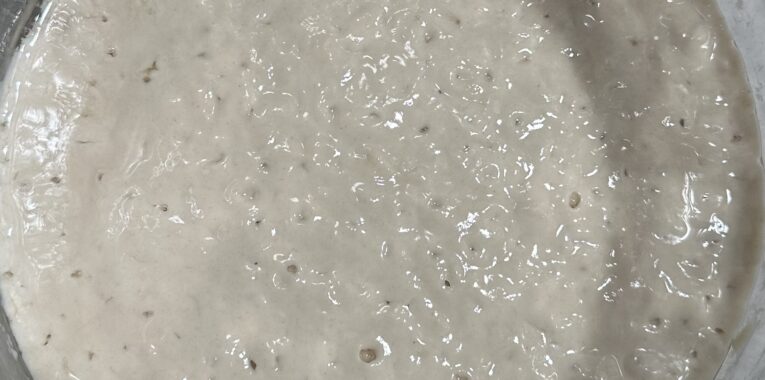As promised, this is the post where I’ll describe my easy sourdough schedule–the one that allows me to forget about my starter for weeks at a time! If you haven’t read my first Sourdough Simplified post, click here! If you want the quick version of my sourdough schedule, it goes like this: bring starter to room temperature, discard, feed, bake, feed, and store in refrigerator until you’re ready to bake again.
Preparing to Bake

A day before you’re ready to bake, remove your starter from the refrigerator. The photo to the left shows a sourdough starter that had been in the refrigerator for around 2 weeks. DON’T TOUCH IT! First, you’ll want to observe the top and look for any signs of mold or streaks of color. If you see mold or pink or orange streaks, it’s time to throw your starter away. If you see a clear or dark liquid on top, this is known as hooch, and you have two options: Dump the liquid off or mix it back in and go to the next step.
People have very strong opinions about whether you should dump or mix in the hooch. I personally mix it in, as pictured on the right, because I don’t want to throw off the hydration of my starter. It might taste a little tangier, but the tanginess is the reason most people prefer sourdough!

Discarding Starter
If you’re following my sourdough schedule, this step is very important. I personally love sourdough discard because it makes some of the BEST recipes! I turn my discard into pizza dough for the freezer, pie crust, crackers, as a boost in granola, biscuits for freezer breakfast sandwiches, etcetera. The possibilities are endless! I put my discard into a mason jar and then store it in the refrigerator until I’m ready to make something with it.

In order for your starter to stay healthy, it must have enough to feed on. A good rule of thumb is to feed at least a 1:1 ratio of water and flour to sourdough starter. This means that, if you save 100 grams of starter, you must feed it at least 100 grams of flour and 100 grams of water. Because I make so many recipes using discard, I usually feed at a 1:2:2 ratio–200 grams of flour and 200 grams of water to 100 grams of starter. To get your starter down to 100 grams, you must discard some of the unfed starter.
Once you have discarded, in an ideal world, you’ll let your starter come to room temperature before you go to the next step. However, you don’t have to wait for it to come to room temperature. It just might rise more slowly if you don’t.
Feeding Your Starter

Next, it’s time to feed your starter. I prefer to add water first and mix it together with the starter, as this prevents clumps. Then, mix in the flour and stir well. Cover and set aside in a warm spot to rise.
Bake!
Once your starter has at least doubled in size, it is time to bake! I tend to make sandwich loaves, artisan loaves, or hot dog buns, as that’s what my husband and I eat the most of.
Feed Again
After you bake, it’s time to feed your starter again to make sure it has plenty of food for its nap in the refrigerator! Feed just like you did in the previous step, making sure to discard, if needed.
As soon as you feed your starter, put it back in the refrigerator. It will slowly eat and double in size in the refrigerator–just like it did on the countertop–but at a much slower pace. It usually takes my starter about 5 days in the refrigerator to rise and fall again. When you’re ready to cook again, just start back at step one!

Final Thoughts
Everyone maintains their starter their own way. You’ll eventually find what works best for you and your family. It might be the same way I maintain mine, but it might be completely different, and that’s okay! What matters is finding a way that is sustainable for you.

